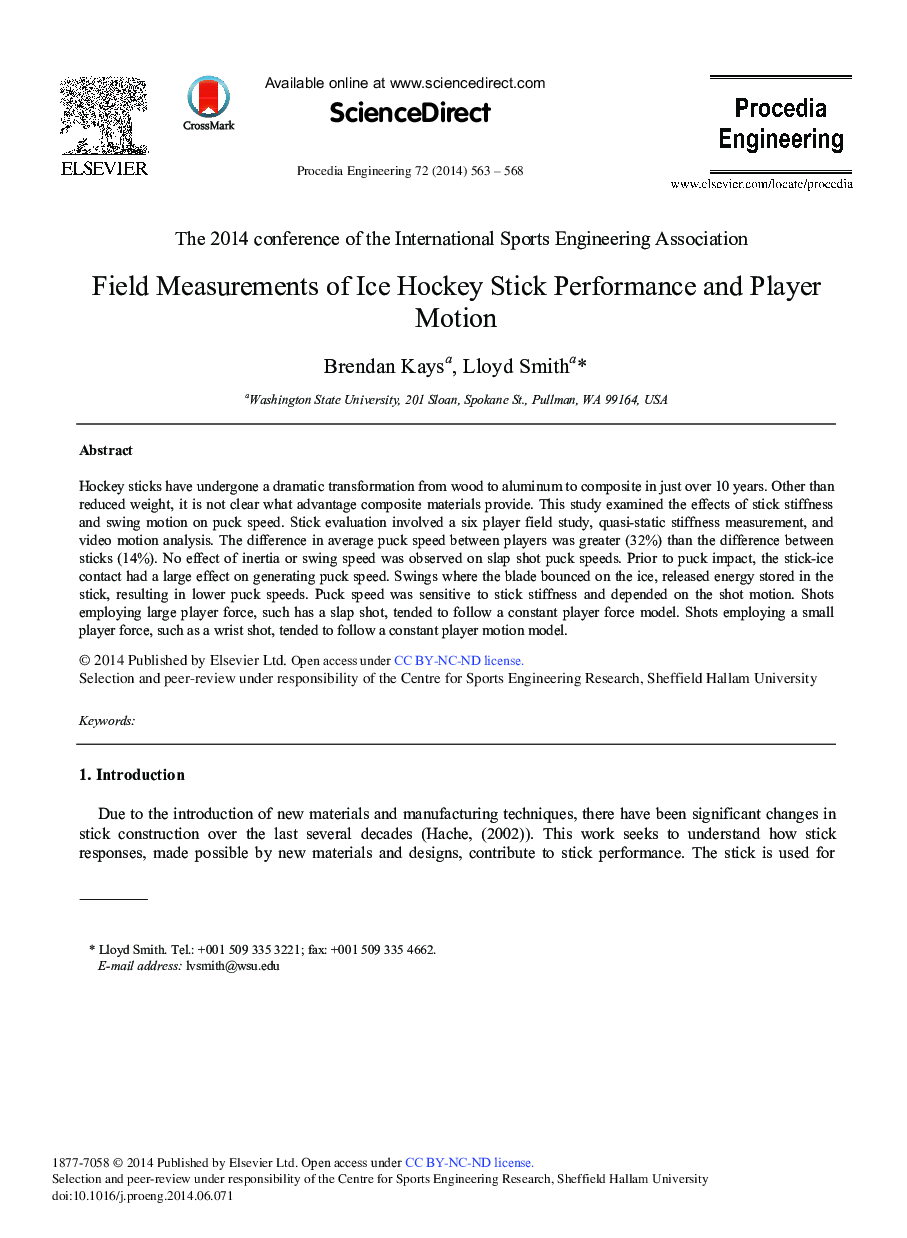| Article ID | Journal | Published Year | Pages | File Type |
|---|---|---|---|---|
| 859010 | Procedia Engineering | 2014 | 6 Pages |
Hockey sticks have undergone a dramatic transformation from wood to aluminum to composite in just over 10 years. Other than reduced weight, it is not clear what advantage composite materials provide. This study examined the effects of stick stiffness and swing motion on puck speed. Stick evaluation involved a six player field study, quasi-static stiffness measurement, and video motion analysis. The difference in average puck speed between players was greater (32%) than the difference between sticks (14%). No effect of inertia or swing speed was observed on slap shot puck speeds. Prior to puck impact, the stick-ice contact had a large effect on generating puck speed. Swings where the blade bounced on the ice, released energy stored in the stick, resulting in lower puck speeds. Puck speed was sensitive to stick stiffness and depended on the shot motion. Shots employing large player force, such has a slap shot, tended to follow a constant player force model. Shots employing a small player force, such as a wrist shot, tended to follow a constant player motion model.
